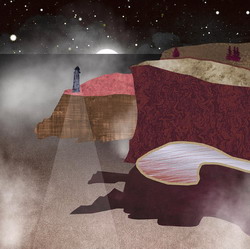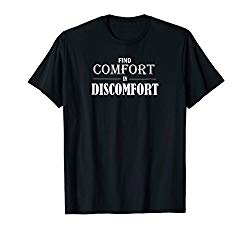The State Of Housing In America
The Harvard University Joint Center for Housing Studies has released its 2019 report into the State of the Nation’s Housing. The report includes four awesome interactive maps illustrating key findings from the study.
Since I’m a data nerd I dug into the full 44 page report. But you probably don’t want to do that so I’ll summarize some of the report and most importantly the maps. Because maps matter the most!
There are four main interactive maps:
- A Cost Burden Map
- A Home Ownership Affordability Map
- A Low Rent Availability Map
- A Residential Land Prices Map
The cool thing is for most of these measures they have data over time, so when viewing say home affordability for a particular area you can see the changes over time.
They Did Address The Gorilla
When the report discusses the supply of new housing and various aspects of housing construction trends, some key numbers pop out that to me underlie the main problem with housing affordability in America. On page 8 of the full report:
With millions of millennials moving into their prime homebuying years, demand for smaller, more affordable homes seems poised for a surge. So far, however, construction of modest-sized single-family homes has been particularly weak. Despite increases in 2017, small homes under 1,800 square feet represented just 22 percent of single-family completions, down from 32 percent on average in 1999–2011. Indeed, completions of large homes with more than 3,000 square feet outnumbered those of small homes for the first time in 2013 and have continued to do so for five straight years. The median sales price for small homes was $197,000 in 2017, less than half the price for large homes.
Bold emphasis mine.
I posted about this once directly, and discussed it in my post showing the myth of stagnant middle class wages. Here are some questions that are usually avoided when housing affordability is discussed:
- Are we just going to pretend that a 2700 square foot home – the average now in America – doesn’t cost more than a 1200 square foot home?
- Are we not going to acknowledge that so many people who say “I can’t afford a home” are actually saying “I can’t afford a 2700 square foot home, and I refuse to consider anything less?”
- Do we think the average American family in the 1970’s was living a horrible existence when they had more kids per family and lived in 1500 square foot homes?
To me the ever-growing size of the average house is the big gorilla in the room of the whole topic, and I’m glad the report mentions it. But they clearly don’t give it the prominence it should have in the conversation.
Another uncomfortable fact for many who don’t agree with bloated home sizes as the main problem is that the price per square foot of homes in America has largely been the same for a long time, with some variations.
So the constant drumbeat that home prices have skyrocketed out of proportion is true on the surface, but easy to see why in the numbers. As the chart shows, price per square foot is mostly the same. But total prices have gone way up, no chart necessary, we all know that.
So how can total prices go way up when price per square foot hasn’t? You don’t need to be Einstein to solve this equation. The number of square feet has to go way up for that equation to be true. And the chart clearly shows that to be the case.
As I showed in my previous post, Americans keep buying bigger houses while they’re having fewer kids.
We’re now at an average of more than 1000 square feet per person in an average household. How much further can it go? Is it really possible for that number to keep going up?
Can we imagine a time when the average kid in the average American home has 1500 square feet or even 2000 square feet to his or her self?
When is enough enough?
And why isn’t this discussed more when the housing affordability crisis is reported on?
Land Is a Factor
I will concede that residential land prices have gone up fast in some areas, as the Harvard report details. But it’s localized, in other areas they’ve actually declined.
So the numbers don’t lie. We have to ask ourselves, isn’t a good portion of the housing affordability problem one of our own making? We as a people demanded bigger houses over time, so builders kept building them bigger. Because that’s how capitalism works. The market gets what the market wants.
Each of us individually has little power to change this. If you choose a 1500 square foot home over the average 2700 square foot one, it won’t affect the market. But if 30 or 40% of us do it, the builders will start getting the message.
I sympathize with many who don’t even have an option to buy a modest home. The fact is that in some areas modest homes don’t even exist anymore, you either get a 3000 square foot home or you don’t get anything.
No wonder people feel priced out of those markets. They’re not priced out by cost per square foot, they’re priced out because they can’t buy a house with reasonable square footage. It doesn’t have to be that way.
But it won’t change until a critical mass changes their buying behaviors.
Geoarbitrage
Geoarbitrage is a viable and popular tool for those seeking financial independence. So if you’re considering a move to another part of the country, the Harvard University Housing Study can surely help you gauge the basics of any prospective destination.
Also be sure to check out my Geoarbitrage Resources Page that has tons of great tools to help you find your perfect location.













































Insightful post, especially the point about how the price per square foot has been relatively stable.
There is definitely a glut coming in the mcmansion homes we have been creating for the past decade. When the next recession occurs a lot of people are going to be holding the bag, especially in the high end luxury spec home market. I’ve already seen articles about some developers who have slashed home prices by 50 million because of no demand and still can’t sell it.
A “mcmansion glut” sounds like a horrible dystopia-type scenario….
Love this data! As a landlord of four homes of 700 – 1000 square feet, I can attest to millennials still seeking small homes. So long as they don’t have kids – at which point, they scramble for BIG. We still enjoy our 1400 sq ft gem with a family of four and it works. Here’s to hoping we don’t lose the character and financial soundness of small houses.
I agree. At some point the bloat has to stop, but every time I think that it gets bigger. Could the average home ever get to be 5000sq feet? It seems ludicrous but we keep climbing
I love that you’re a data nerd. It saves me a lot of time. Haha!
The fact that price per sq. ft. has stayed constant while costs go up is a stunning statistic. And you’re right. You never hear about it. We’re so caught up in the bigger is better mentality in a lot of areas. It’s scary, really.
Thanks for another great post.
Bigger/Better/Faster/More
We have one kid and about 1,000 sq ft. It’s not bad, but we would like to have more space.
Our next door neighbor had 2,500 sq ft and 3 kids. It was too small for them so they moved to a 4,000 sq ft home. Wow! I can’t imagine trying to keep that place clean. I guess you’ll have to hire a cleaner if you live in a huge house like that.
Wow, most American would rather get burned at the stake than suffer a life in your house… How do you survive 🙂
One thing that is being missed is the upfront costs of building. You have to building 3k sq ft to offset all the fees. In some areas it 30k before you even hit shovel to dirt. Now I have to pay that – hook into sewer, water and electric on top of the initial charges – then pay prevailing wages – if I can even hire skilled labor. There is no way to make a living building house that are 1500 sg ft house that people will want. Top that off with buyers wanting luxury finish – forget about it. As mentioned expectations now are very different from 1970’s.
Our expectations will be our downfall I fear
I was just browsing homes in my home state, and I had a really hard time finding a place that was 1,500 square feet or less. Any more than that and there’s more nooks and crannies for burglars and monsters to hide!
The luxury housing rentals in NYC are a problem. So overpriced. They build these places with cheap finishings, then charge an arm and a leg for it. Oh yeah, so you can have a rooftop with astroturf on it, haha.
My bro in law mentioned buying a piece of land and building a “passive house” on it. Have you heard of them?
I have a lot of architect friends so I have heard of passive houses and my friends have helped design some. Hopefully it’ll become more popular, but unfortunately the trend seems to be going toward bigger and bigger, even as families shrink
You linked the report….and my evening entertainment is set. Note, I have unique forms of entertainment.
HA! Me too, thanks for stopping by!
Great post. This definitely made me think about our city and community of friends. I recently took dinner to a young couple buying their first home and realized it cost as much as our last home where we raised four kids and lived there up until my husband turned 59. That said, I then realized that here in Memphis, our issue with modest priced homes under 2,000 square feet is that the neighborhoods are no longer safe. My son is seeking FI and wants to buy a modest home but the declining neighborhoods/school are the biggest issue for him. I am just curious if some people are buying “more” house (size and money) just to get into a safer neighborhood and better schools? Or is this just in my area?
That’s a good question Kim. I’m sure in some areas that’s a factor, but it’d be nice if folks could move to a safer area and actually have a choice of houses, to include some in the 1300 – 1800 sq ft. range which to me is the sweet spot. But they get no choice in most areas, especially with new builds.
The good news is, I’ll get to read that report for work 😉
We have strange hobbies don’t we 😉
That my hobbies mix well with work is probably why I say I actually like my job 😂
Yup. That’s a great place to be!
I think you’ve very much ignored the supply-side factor. Builders are building bigger homes because the same size lot reaps more profit. My childhood home was torn down and a McMansion put up in its place (with comically little space on either side of the normal-sized lot). Why? Well, you said it: a modest sized house is worth half the price! Does it cost half the price to build? No. The property value of the house plus the fixed costs of constructing a unit of any size mean that the small house has higher relative cost and less profit margin.
This is the same phenomenon which is driving bigger SUV cars. Their profit margin is much higher than sedans.
Builders and carmakers only make smaller, less profitable products when consumers absolutely demand it, but the supply also constrains (and shapes) the terms of the demand, especially when the housing stock, on average, is larger in size. As you said, most young families literally can’t find a modest sized house anywhere where there are jobs and a healthier housing market. You can move to an older area without much housing development, but then you can’t find a well-paying job. So, what’s an individual to do?
“Builders and carmakers only make smaller, less profitable products when consumers absolutely demand it”
You hit my point right there. We can refuse to play, but we don’t. If people stopped buying 4000sq ft houses and SUVs then they’ll stop making them, plain and simple.
And the costs to build a house “at any size” are not fixed, not even close. A bigger house is still way more material and time. It may not be an even quantitative scale, but it’s still more. The lot size issue is often steady because they just build a bigger house on the same lot, but even a bigger lot costs more money.
Yes, but your price per square foot goes up with a smaller home. This is why your graph shows it as stagnant. If home sizes hadn’t changed, your $/Sq.Ft. would definitely rise. I wonder if there is enough data to calculate $/Sq. Ft. at a constant overall size?
You make a good point, but that data is also an aggregation of the country. For sure in certain areas price per square foot has gone down, and in others it’s gone up a lot. My previous post about home bloat cites some other data and resources, but in reality it’s a big country and there’s a ton of variance.
To me the bottom line is that in a free market consumers are always in control. Sure, there are some exceptions and limitations, and the degree of control is not always as absolute or the same, but in general consumers get from suppliers what they want. Ford and Chevy are stopping the production of sedans and making all SUVs because that’s what America wants (despite their supposed belief in climate change). Same with homes. Lifestyle inflation in America continues on all fronts – with cars, appliances, conveniences etc. And with homes it just means that to continue to “make our standard of living better”, a bigger house is needed. So that’s what the consumer gets.
i grew up in the country with some boys a couple of miles away as “neighbors.” they had 5 kids in that little house with 4 boys and a girl. the 4 boys shared 2 bunk beds in the same room until they left as adults and they all turned out fine. in fact i consider it a double bonus as none of those boys were in a hurry to return to the nest as adults! y’know what else? they were outdoors a helluva lot as there just wasn’t as much space. i think people today fail to realize that all that space per human is a luxury and a “want” versus a need.
Great points man, smaller houses keep kids outside and active. The obesity epidemic is only getting worse, as houses continue to expand. With more power outlets than ever to recharge gadgets….
I guess I lucked out because I got a 1969 house that’s 1200 sq ft. It’s sufficient unto my needs. Even so two bedroom houses are pretty much non-existent here. So even with reasonable house sizes we’re still semi-constrained by the housing market here.
Your house is probably really built well, much better than the modern stuff that’s slapped together quickly
We need people to clue into this ! I love that you calmly and clearly just let the statistics and data speak for itself, there is now way to deny or ague against it. We need and should live in smaller homes, both from a social and environmental perspective. We use too much space and we use too many resources for our keeping up with the Jones’ , society needs a harsh jolt of reality. Great posts Dave
I’m reading this from a 400 sq ft cabin in the Napa Valley, built in the late 1800’s. Yet it is about 3 times bigger than our travel trailer. Oh the luxury! As Freddie points out, the small space encourages you to go outside, which is the best part of living this way. Every time we arrive home in the 2300 sq ft, we wonder why we own that again?
I’m jealous Susan, hilarious that 400 sq. ft. is an upgrade for you from the trailer. You’ve no doubt learned how to live simply!
I see new large homes but also many new condos, townhouses and smaller homes being built. There is variety out there and within mixed communities as well that are newly built to accommodate to different price points. To answer your other question, for some….it’s never enough. 🙂
Enough is a tough proposition for many
I’ve never fully understood the appeal of McMansions. Many are not constructed well and have a mix of designs spanning various styles that’s often unattractive. Most also seem to have massive master bedrooms (most of that space is unused) and tiny additional rooms. All of that aside, I can’t fathom cleaning or paying the heating or cooling bills. I freak out when my electric bill is over $100! And I live in less than 900 square feet. I will say many have kitchens and big windows that I love, though!
At one point my best friends AC bill for his McMansion was 3/4 of my entire mortgage payment. Bonkers.
We’re at 1500 sq ft., which seems to be the perfect amount of space for the 2 of us, and would be fine to add a kid or 3, IF it has the right layout (which ours doesn’t now). The main problem we’re coming across is the lot size. Find a decent sized lot, then they cram in those mcmansions, making the yards TINY. I don’t want to be able to hand that cup of sugar the neighbor needs to borrow through the kitchen windows! Drives me bonkers. I’m too a millennial that wants a 1500 sq ft house (or smaller depending on layout), on a decent sized lot (so those kids and pets and us can spend time outside), and they just don’t exist anymore (we’re in Denver). Now my brother on the other hand, 4 years younger, just bought a 5000 sq ft house (just him and his wife and 2 dogs….no kids in the plans). Guess that means we cancel each other out. Oh well. At least his is on 2 acres in SLC, I guess (?)
I have about 1400 and yes I agree, it’s a perfect size. Cozy enough but also big enough. And I hear ya about the tiny lot sizes and abutting houses, it’s ridiculous!
People wanna live where its warm! I can’t wait to read the full 44 page report today 😀
Amen!
YES, thank you for pointing this out! This is 100% true and has been driving me nuts the past year as I start looking at possible relocation for our family in the next few years. It is very difficult to find a 1500-2000 sq-ft home in 1) a nice area, 2) in a condition that doesn’t require massive refurb (and most of the time the refurbs are not in nice areas!). And the nicer the area, the bigger the home generally. The exception is inner city/town areas where lot sizes are smaller and you have historic homes; however, we would prefer to be outside city centers and possibly rural (5+ acres). When you look at rural lots that surround nice areas/towns, they are usually built by upper income folks who “retreat” to the country on their 5+ acres and 3,000-6,000 sq-ft weekend home. It’s frustrating. It has led me to believe we may have to build a custom home and even though it will cost more upfront per sq-ft than buying used – it will lead to lower maintenance costs, taxes, and hassle long-term.
For reference, we currently live in north Houston in a 3,100-sq-ft mid-century ranch that is amazing. It was $330,000 fully renovated to HGTV quality, so an absolute steal. The same home would’ve gone for $1M in central Houston or Austin. We have two young kids. It’s an “odd” home today b/c it is a 3-bed 3-bath with no additional rooms other than living/dining/kitchen and a small “nook” in a hallway. No game room, no office, etc. So while we love it, if we’re honest, we would prefer to reduce the size of the master bed/bath (it is seriously 800-1000 sq-ft) and the two secondary baths. That would put us around 1,800-2,000 sq-ft as the ideal home size.
Ironically, I work for an engineering firm that specializes in residential land development. We’ve designed some of the largest modern developments in Texas. It is absolutely true that the developers control the market; however, it’s a matter of business and economics. It makes more sense for them to cut every tree and cram lots as close together. It sells faster, easier, and for higher profit. Also, smaller homes are kind of “seen” as targeting or bringing in lower income people. it has this stigma that developers shy away from or that the local county/city don’t want to see, or they direct developers to put these homes in low-income areas.
So yeah, when I hear people complain about home prices, I ask myself why did they need to buy a 4,000 sq-ft home, particularly in a state (texas) with 2.x% property taxes… It is a combination of no choice, they wanted big, and accepting the status-quo. The tiny home movement is inspiring but it’s impact is limited, I wish there was more attention put on “small” efficient homes on reasonably sized lots (so same lot size as now but half the house and with trees left in place) – but that would increase the per sq-ft cost to developers and thus the price – and no one in America is willing to pay MORE for LESS. =(
Wow thanks for the great comment! It is a pet peeve of mine too – people complain about things and don’t take a step back to see that they’re not even complaining about the same thing. In this case they’re complaining that houses are too expensive when they’re really saying “a house and a half” is too expensive. Well, duh, don’t buy the extra half of a house!
You make some great points too about the stigma associated with smaller houses in areas filled with McMansions. It’s sad but probably true and an ugly thing